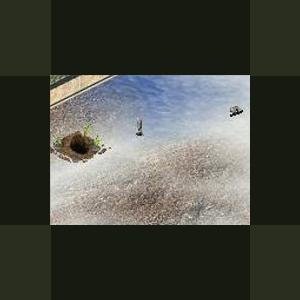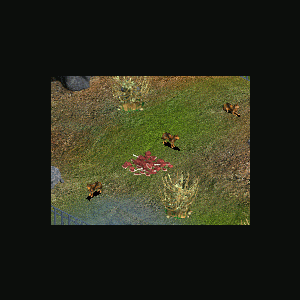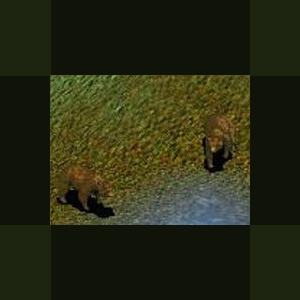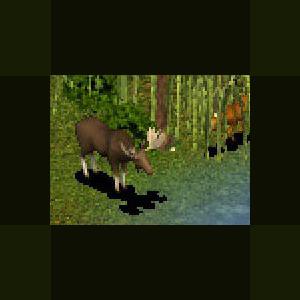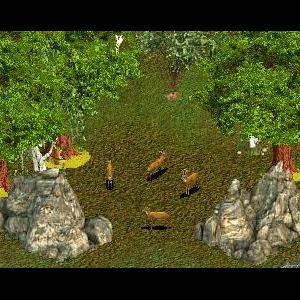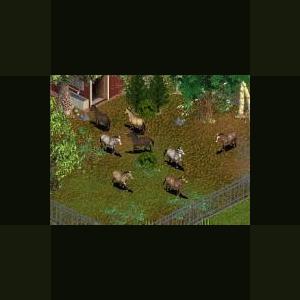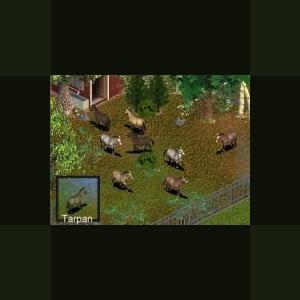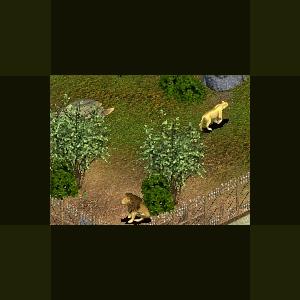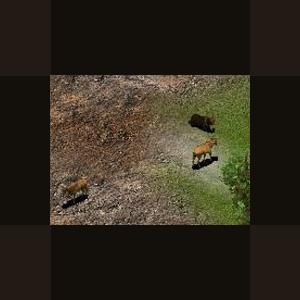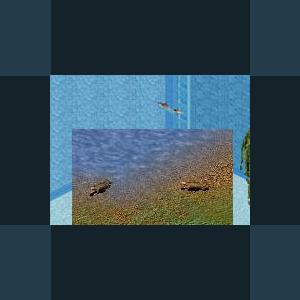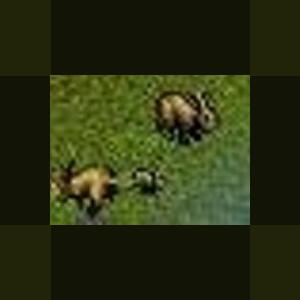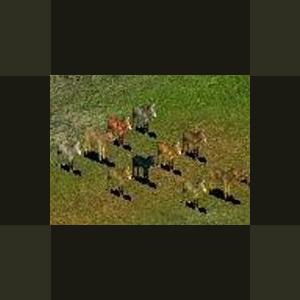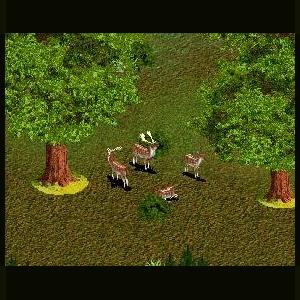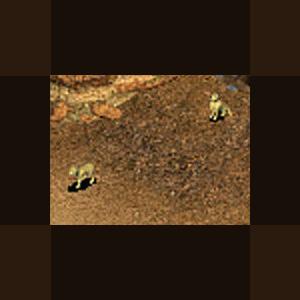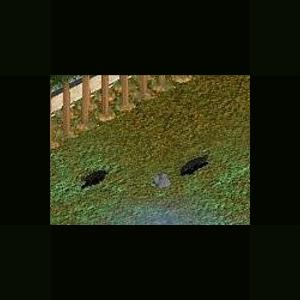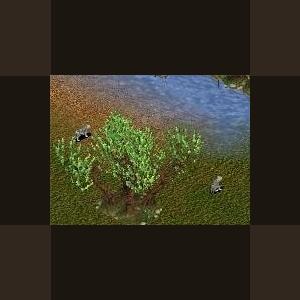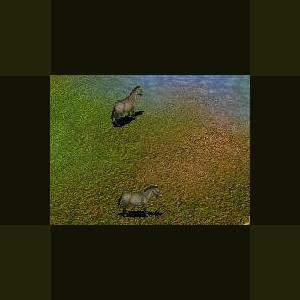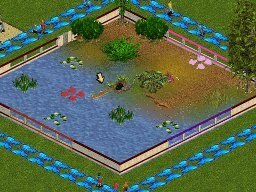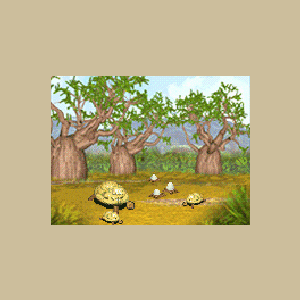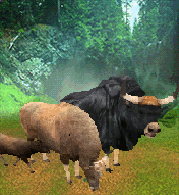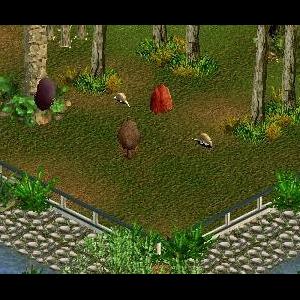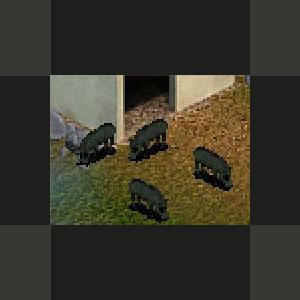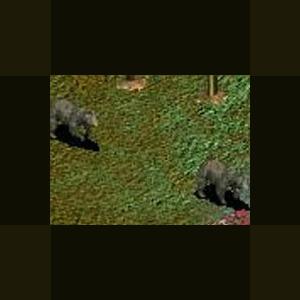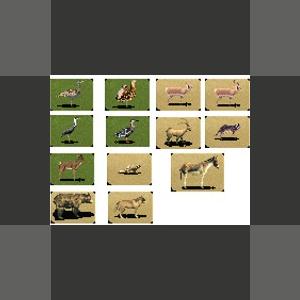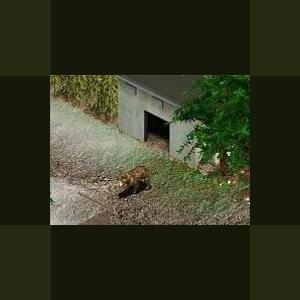279 files
-
Ermine by Jordan
By Guest
The Ermine, also known as a stoat when not in its winter coat, is found in temperate and arctic regions throughout the northern hemisphere and is a member of the weasel family.
Updated 2010-11-03
Just to save space with less in zip and smaller image.
Nothing new.
480 downloads
0 comments
Updated
-
Ethiopian Wolf by Ryno
By Guest
Ethiopian Wolf by Ryno
The Ethiopian Wolf also known as the "Abyssinian Wolf", "RedJackal"or "Fox", "Simen/Simenian/Simian/Simien Fox or Jackal" and "Jedalafardaa" ("Horse's Jackal" in English), is one of the rare
Updated 2010-11-03
Just to save space with less in zip and smaller image.
Nothing new.
397 downloads
0 comments
Updated
-
Eurasian Brown Bear by Ghirin
By Guest
The Eurasian brown bear is the Old World population of Ursus arctos, equivalent to the grizzly and Kodiak bears of North America. These bears have considerable size range, from the small bear of southern Europe to the giant bears of the Kamchatka peninsula (eastern Siberia). Likewise, the fur has a wide range of color, from blonde to almost black.
The brown bear has adapted to many of the habitats found on the Eurasian continent, including the dry environment of the Gobi desert and the mountain ranges of southern Asia. Populations have been recorded in Russia, Scandinavia, Eastern Europe, China, the Himalayas, Turkey, and Hokkaido. Small, isolated populations have also been found in continental Western Europe.
Brown bears have a varied diet. They usually eat what is most available at the time. Spring foods include grasses, sedges, moss and roots while later in the year, berries become more important. Other foods such as insects, fungi, and meat are eaten when available. In areas where there are salmon runs, bears will harvest salmon as the fish make their way up rivers to spawn.
Late fall is the time that brown bears seek out dens for hibernation. The bear might dig its own den, and then make a bed of dry vegetation. During hibernation, there is a significant depression in the bear's hear rate and respiration. However the bear can be easily roused if it needs to escape from danger.
Created by Ghirin 2003
Updated 2010-11-03
Just to save space with less in zip and smaller image.
Nothing new.
329 downloads
0 comments
Updated
-
Eurasian Elk by Ghirin
By Guest
Eurasian Elk
Author: Ghirin
http://www.zoo-tek.com/forums/index.php?download=110
The majestic elk is the largest member of the deer family, measuring up to 7.5 feet in height. They can be found throughout the northern forests of North America, Europe, and Russia. Male elk (bulls) are much larger than female elk (cows); a large bull can weigh up to twice as much as a typical cow. During most of the year, the bull is distinguished by a magnificent set of antlers, having an average spread of 4 to 5 feet and as many as 30 tines. The shape of these antlers is unique to the individual. Mature males shed their antlers once a year in the winter and replace them with larger ones. Other characteristics of the elk include large muscular shoulders, a "bell" or dewlap of skin under the chin, a drooping nose, long legs, and a small tail.
Elk are a very hardy and adaptable species, wintering successfully in some of the coldest regions of the world. There is some confusion surrounding this animal's name: whereas an elk is always an elk, an elk is called a moose in North America, and an elk in America is a different species known in Europe as a red deer.
In the wild, elk occupy a wide variety of different habitats, ranging from densely forested areas, to swampy areas around bogs and streams, to open forest-tundra regions. A typical elk habitat might be a forested area that contains a water source and abundant plant life. Elk enjoy munching on a wide variety of foliage, with a particular fondness for willow. An adult elk consumes an average of 44 pounds of plants a day, but will eat more in spring and autumn. In the autumn, they can consume as much as 130 pounds a day.
Elk have poor vision, which is compensated for by acute hearing and smell. They are swift runners, reaching speeds of up to 35 miles an hour. They are also excellent swimmers and can dive a considerable depth, having valvular nostrils, which seal upon submergence.
Elk are solitary animals, except during the rutting season. The strongest social bond is between mother and young. They do not like crowding. They will generally avoid humans, but can be unpredictable and dangerous under certain conditions. For instance, cows with calves and rutting bulls have been known to charge people, cars, horses, and even locomotives.
During the fall rut, bulls compete for mates by bringing their antlers together and shoving. Generally quiet creatures, both sexes give out a cow-like moo during this season. Elk reproduce well and can quickly fill their habitat to capacity if they are not limited by predation and hard winters. When food supplies are abundant, cows will frequently give birth to twins or even triplets. In the spring, last year's offspring will be driven off by the cow as she prepares to give birth again.
A healthy adult elk has little to fear from most animals. The two main predators of elk are bears and wolves. Many more elk fall to humans, as these animals are a favorite target for big game hunters. The primary limiting factor of elk populations is habitat. A harsh winter will greatly increase elk mortality.
*Inspired by the Zoo Tycoon Brains Trust. (http://www.geocities.com/professorpaul1/home.html)
Created by Ghirin 2003
Updated 2010-11-03
Just to save space with less in zip and smaller image.
Nothing new.
298 downloads
0 comments
Updated
-
Eurasian Roe Deer by Taz (Tasmanian_tiger)
By Fern
Eurasian Roe Deer
Author : Taz (Tasmanian_tiger)
Originally released : August 1, 2004 at Zoo Admin
Updated : August 26, 2013 by Jay to correct 1 animation view, to remove unnecessary files and configuration lines, to make some minor adjustments to the animal info, and to make it like the English Elms as much as its most liked in-game foliage. Please note that the version at Taz's site is no longer the most current version, since she is deceased.
Current ztd date : August 26, 2013
Compatibility : All Game Versions
Description : The Roe Deer is very abundant in some areas of Europe. It was originally a forest dweller but has adapted to live successfully in cultivated fields and the small woods created by man. There are three sub-species of Roe Deer: the European Roe Deer, the Siberian Roe Deer, and the Chinese Roe Deer. The Siberian form is larger than the other two, and has antlers which have more branches.
Description from Taz's site : The real Bambi.. first deer I did, in an attempt to create more European mammals.
Description by Taz when she originally put it at Zoo Admin : The Eurasian roe deer is one of the most common deer of Europe. The roe deer is also known from "Bambi", the book, that is. The movie uses another species. Habitat is deciduous forest. This animal will add interest to any zoo.
435 downloads
0 comments
Updated
-
European Horse Pack singles by Genkicoll
By Guest
Four European horses made to be compatible with the Forest Tarpan by Ghirin.
Turkmen Akhal-Teke Horse
The Akhal-Teke horse breed (pronounced Ah-cull Tek-y) is a breed from Turkmenistan, where they are the national emblem. It is named after the nomadic tribe that bred them. They are racehorses, noted for their endurance on long marches and are thought to be the predecessors of the Arabian and English thoroughbred breeds. These beautiful "golden-horses' are adapted to severe climate conditions and are thought to be one of the oldest surviving horse breeds. There are currently about 3,500 Akhal-Tekes in the world, mostly in Turkmenistan and Russia, although they are also seen in Germany and the United States.
Alexander the Great's horse, Bucephalus, is said to have been an Akhal-Teke.
Breed characteristics
The Akhal-Teke's most notable and defining characteristic is the natural metallic bloom of its coat. This is especially seen in the palominos and buckskins, as well as the lighter bays, although some horses "shimmer" more than others, and is thought to have been used as camouflage in the desert, where the heat causes the desrt to shimmer. Also noteworthy are the breed's almond-shaped eyes. The breed is very tough and resilient, due to the harshness of the Turkmenistan lands, living without much food or water. This has also made the horses good for sport. The breed has great endurance, shown in 1935 when a group of Turkmenian horsemen rode the 2500 mile journey from Ashgabat to Moscow, which lasted 84 days, and included a 3 day desert crossing of 235 miles without water.
The horses have a fine head with a straight or slightly convex profile, and long ears. The mane and tail is usually sparse. Their long back has little muscle, and is coupled to a flat croup and long, upright neck. The Akhal-Teke possesses a sloping shoulder and thin skin. These horses have strong, tough, but fine limbs, although the hind legs are sometimes sickle-hocked. They have a rather shallow body with a shallow ribcage (like an equine greyhound), although a deep chest, and this shallowness continues to the back of the frame. The conformation is not considered "good" by Western terms, but that is made up by the breed's great beauty, and tremendous athletic ability.
The Akhal-Tekes are brave riding horses, lively, and alert, but are known to be obstinant and rebellious at times. They are generally a one-rider horse.
The horses are usually a pale golden color (like honey) with black points. They can also be bay, black, chestnut, or gray. The Akhal-Teke usually stands between 14.3 and 15.2 hh.
Chestnut Goklan Horse
The Goklan horse is, with the exception of the Yabou, the "heaviest" descendant of the old Turanian horse. He was bred in the main by the Goklan Turkoman, whose tribal borders are within Iran. As a result of the needs they had for their horse, the horse is well suited to mountainous terrain.
Breeders of Turkomans in Iran note that some Akhal-Teke foundation sires bear a strong resemblance to the Goklan horse they breed today. Curiously enough, some Arabian horses also bear a strong resemblance to the Goklan: the famous Polish Arabian sire Wielki Szelm (left) bears a very strong resemblance to Akhal-Teke foundation sire Dor Bairam (right). The Arabian has a higher tail-set and shorter back, accommodations to their differing terrain. Otherwise, in overall conformation, they are both much like a heavyweight Thoroughbred hunter.
Russian Arabian Dun Horse
The modern Russian Arabian breeding program was thus begun in 1930 at Tersk. Ever since the stud has accumulated much experience and produced dozens of superb individuals.
In 1930 the gray Koheilan IV was bought in Hungary, and from France came six pure–blood Arabian mares and a stallion. In 1939 from England came 6 Arabian stallions and 19 mares.
In 1939 a large group of Arabians arrived from Poland, and 9 more Arabian mares from Germany were added to the Tersk stock in 1947.
In March 1976 a WAHO commission visited Tersk. It confirmed the high quality of the stock there and recognized the pure–blood origins of all the horses except for Amara and Basma imported from Egypt in 1973.
In 1986 some stock was transferred to Khrenovoe, the stud founded by Count Orlov. The Arabian department at Khrenovoe is quite successful. The Khrenovoe horses compete with the Tersk Arabians on the track.
White Yabou Horse
The Yabou (sometimes spelled "yaboo") is the pack horse of the peoples on the Turkoman steppes. Some older references use "Yabou" in terms of "the horse of the people, a pack horse, a nag," but the Yabou is much more than that. The Yabou is every bit as hardy and enduring as the other Turkoman strains, and differs from them only slightly. There is a copious mane to go with the generous tail. The neck is set on lower than that of the Teke, Yamout or Goklan. The horse is somewhat less narrow than other Turkomans, and typically shorter. The shoulders especially are powerful. All in all, this is a horse built to carry weight over a distance, at speed. (Sometimes his job was to run behind the Turkomen horses, carrying their heavy felts). He often ambles and paces with fantastic speed.
Preliminary blood test results performed at the University of Kentucky show that the English Thoroughbred is more closely related to the Yabou than to either the other Turkoman breeds/strains or the Arabian in terms of shared genetic markers. That this ubiquitous "utility" horse would have a closer association to the Thoroughbred than other "thoroughbred" horses has come as somewhat of a surprise, but perhaps it should not. From the photo above (taken by Farshad Maloufi and used here with his permission), one can see that the Yabou is not at all lacking in quality.
The Yabou comes in the complete range of colors found in the Turkoman and Caspian horse.
The Turkoman do not breed Yabous themselves, although they use them extensively for pack horses. Rather, they buy them from gypsies who live in the more forested areas of the mountains. The Yabou probably always shared the range of the Turanian Thoroughbred, and was much more numerous; the Pazyryk kurgans each contain only a single Turanian but as many as a dozen or more Yabous.
Updated 2010-11-03
Just to save space with less in zip and smaller image.
Nothing new
502 downloads
0 comments
Updated
-
European Horses and Forest Tarpan Comb. by Genki and Ghirin
By Guest
Genki's European Horses and Ghirin's Forest Tarpan combined into a single ztd. These 5 horses are 100% compatible, and will be very happy in a shared exhibit.
Forest Tarpan by Ghirin:
The tarpan (Equus caballus gmelini) was the wild horse of Europe and western Asia.
There were two basic types: forest and steppe. The forest tarpan was a bit smaller than its steppe counterpart and darker in color. The tarpan is believed to the ancestor of modern light horse breeds.
The forest tarpan lived in most of Europe, dwelling in the forested areas. It became extinct as farmers converted its habitat to farmland and killed tarpans because tarpan stallions would steal domesticated mares for the wild herds. The original wild tarpan died out in the late 1800s.
Two attempts have been made to reconstruct the tarpan from animals of mixed tarpan and domestic background. In Poland, the government has established a feral herd of horses descended from mixed stock in the forest preserve of Bialowieza. With each generation, this herd seems to display more tarpan-like characteristics. The second attempt was by German zoologists. They used primitive breeds of European horses to produce a tarpan-like horse.
The classic features of the forest tarpan include a mouse-dun color with a black stripe down the center of the back and dark legs, semi-erect mane, large head with massive jaws, a thick neck, and tough hooves that do not need to be shod.
Created by Ghirin 2003
Updated 2010-11-03
Just to save space with less in zip and smaller image.
Nothing new
405 downloads
0 comments
Updated
-
European Lion by Coolperson5
By Guest
The European lion (Panthera leo europaea or Panthera leo tartarica) could be an extinct subspecies of lion that inhabited southern Europe until historic times. This population is generally considered part of the Asiatic lion (Panthera leo persica), but others consider it a separate subspecies, the European lion (Panthera leo europaea). They also could possibly have been the last remnants of the Cave Lion (Panthera leo spelaea).Two prehistoric lions lived in Europe, namely the Early Middle Pleistocene European cave lion Panthera leo fossilis and the Upper Pleistocene European cave lion Panthera leo spelaea.The European lion in historic times inhabited the Iberian Peninsula, southern France, Italy and Balkans south to northern Greece.[2][citation needed] This was the northernmost of the subspecies of lion until its extinction. Its habitat was the Mediterranean and temperate forests of the area, with prey that included the wisent, elk, aurochs, deer and other European ungulates. Due to their remote extinction, little is known about these subspecies of lion. Aristotle and Herodotus wrote that lions were found in the Balkans in the middle of the first millennium BC. When Xerxes advanced through Macedon in 480 BC he encountered several lions.[3][4] Before 20 BC they became extinct from Italy and around the year 1 AD from Western Europe also.[5] Around the year 70 they were restricted to northern Greece, in the area between the rivers Aliakmon and Nestus. Finally, in the year 100 they became extinct in Eastern Europe too.[5] After that lions in the European continent became restricted to the Caucasus, where a population of the Asiatic lion survived until the 10th century.The European Lion became extinct due to excessive hunting (lion hunting was popular among the Greeks and Romans), over-exploitation, and competition with feral dogs. Along with the Barbary lion and the Asiatic lion the European lion was used in the Roman arenas, where they fought against bestiarii, and animals like the Caspian tiger, the aurochs and bears. Due to geographical distribution they were more accessible to Romans than North African and Middle Eastern lions. As the European lion became increasingly rare, Romans began to import lions from North Africa and the Middle East to fight in the arenas. Further details about their extinction are unknown.
Updated 2010-11-03
Just to save space with less in zip and smaller image.
Nothing new
356 downloads
0 comments
Updated
-
European Mouflon by Ghirin
By Guest
The European mouflon (Ovis ammon musimon, Ovis musimon) is the smallest and westernmost of the wild sheep and is thought to be one of the ancestors of the domestic sheep (along with the Asiatic mouflon). The European mouflon once lived in most of the mountain ranges of Europe, but hunting and agriculture have markedly reduced mouflon numbers. Remnant herds still exist on the islands of Corsica and Sardinia, and the mouflon has been reintroduced to areas of its former range.
Mouflon prefer to live in lightly wooded areas located on the middle slopes of mountains. They are most active in the morning and late afternoon.
References:
http://animaldiversity.ummz.umich.edu/accounts/ovis/o._ammon_musimon$narrative.html
http://www.ansi.okstate.edu/breeds/sheep/
Walker's Mammals of the World. Nowak, 1999.
Created by Ghirin 2003
Updated 2010-11-03
Just to save space with less in zip and smaller image.
Nothing new
347 downloads
0 comments
Updated
-
European Otter by BigCatKeeper
By Guest
European Otter
Author: BigCatKeeper
http://www.zoo-tek.com/forums/index.php?download=161
With the exception of the fox and wildcat all British carnivores belong to the family known as mustelids (the weasel family) of which there are 8 member species in the UK. All tend to be characterised by long sinuous bodies and short legs (the powerful build of the badger is an exception to this, but this animal is highly distinctive because of its facial strips and size).
The Otter is a secretive semi-aquatic member of the mustelid family, once widespread in Britain where it was found living on rivers and inland waterways and in certain coastal areas.
In the late 1950's and early 1960's pollution, hunting and loss of habitat caused a serious decline in the otter population, not only here in Britain but throughout Europe.
Today, with strict protection from the Wildlife and Countryside Act anti-pollution laws resulting in cleaner rivers, and river banks environmentally managed to provide secluded undisturbed habitats, the otter population is once again on the increase with many sightings in their former habitats.
Otters in the wild are extremely shy and rarely seen. During the day they tend to lie up in suitable cover on the river bank only becoming active at dawn and dusk when riverbanks and waterways are at their quietest, allowing them to hunt for food undisturbed.
Fish make up the greater part of an otter's diet with eels being a particular favourite, but they will also take water fowl, moorhens, coots and ducks and anything else that is edible living along the riverbank.
European Otter created by Bigcatkeeper
Thanks to Professorpaul
Updated 2010-11-03
Just to save space with less in zip and smaller image.
Nothing new
478 downloads
0 comments
Updated
-
European Rabbit by Sundance
By Guest
European Rabbit by Sundance
In several parts of the world the European rabbit is known for the damage and depredation. It was introduced into Britain by the Normans, and introduced from there by settlers into Australia and New Zealand.
Once introduced in the wild its numbers increased and livestock pastures and crops were devastated. In Australia, the near extinction of several types of marsupials can be attributed to competition with rabbits. European rabbits can be prolific breeders. One doe can produce up to thirty young in a single breeding season.
works with ZT, DD, MM and CC.
Updated 2010-11-03
Just to save space with less in zip and smaller image.
Nothing new
389 downloads
0 comments
Updated
-
Evolution of the Horses Pack by Moondawg
By Guest
Evolution of the Horse Pack by Moondawg - Combined
The horse belongs to an order known as the Perissodactyls, or "odd-toed ungulates", which all share hoofed feet and an odd number of toes on each foot.
Horses appeared to be absent from the Americas until the Spanish Conquistadors brought domestic horses from Europe in the 16th Century, and escaped horses quickly established large wild herds. The early naturalist Buffon suggested in the 1760s that this was an indication of inferiority of fauna in the New World, then later reconsidered this idea.
William Clark's 1807 expedition to Big Bone Lick found "leg and foot bones of the Horses" which were included with other fossils sent to Thomas Jefferson and evaluated by the anatomist Caspar Wistar, but neither commented on the significance of this find.
During the Beagle survey expedition the young naturalist Charles Darwin had remarkable success with fossil hunting in Patagonia. On 10 October 1833 at Santa Fe, Argentina, he was "filled with astonishment" when he found a horse's tooth in the same stratum as fossil
giant armadillos, and wondered if it might have been washed down from a later layer, but concluded that this was "not very probable". After the expedition returned in 1836 the anatomist Richard Owen confirmed that the tooth was from an extinct species which he subsequently named Equus curvidens, and remarked that "This evidence of the former existence of a genus, which, as regards South America, had become extinct, and has a second time been introduced into that Continent, is not one of the least interesting fruits of Mr. Darwin's palæontological discoveries."
In 1848 a study on the fossil horses of America by Joseph Leidy systematically examined Pleistocene horse fossils from various collections including that of the Academy of Natural Sciences and concluded that there hadbeen at least two ancient horse species in North America, Equus curvidens and another which he named Equus americanus, but a decade later he found that name had already been taken and renamed it Equus complicatus. In the same year he visited Europe and was introduced by Owen to Darwin.
Also included in this pack is the Hipparion and the Merychippus both files have been updated to work with ZT so you won't need DD or CC to use them.
This pack is a combined pack so if you already have Hipparion and Merychippus then the single files will nee to be removed from the update or dlupdate folder.
Updated 2010-11-03
Just to save space with less in zip and smaller image.
Nothing new.
464 downloads
0 comments
Updated
-
Fallow Deer by Taz (Tasmanian_tiger)
By Fern
Fallow Deer
Author : Taz (Tasmanian_tiger)
Originally released : August 20, 2004 at Zoo Admin
Updated: August 13, 2013 by Jay to correct 1 animation view, to remove unnecessary files and configuration lines, to make some minor adjustments to the animal info, and to make it like the English Elms as much as its most liked in-game foliage. Please note that the version at Taz's site is no longer the most current version, since she is deceased.
Current ztd date: August 13, 2013
Compatibility : All Game Versions
The Fallow Deer belong to their own genus, the Dama, which differs from other deer in that the antlers are palmated. There are thought to be two subspecies of fallow deer, the Mesopotamian Fallow Deer, and the European Fallow Deer. The Mesopotamian Fallow deer has almost been hunted to extinction in its native middle east. The European Fallow Deer occurs throughout Europe and is numerous. The European Fallow Deer originally occurred throughout Europe before the last ice age, but retreated towards the Mediterranean and North Africa as the ice advanced. It was re-introduced back into Northern and Western Europe by the Romans. Further introductions were carried out in the middle ages. The Fallow Deer is a popular parkland animal, and has been kept and bred for many centuries. Through selective breeding a number of different colour types have been produced; these include black, white and red forms. The Fallow Deer seems to have evolved from the Sika Deer.
625 downloads
0 comments
Updated
-
Fennec Fox by Ghirin
By Guest
The fennec fox, smaller than a housecat, is the smallest of the foxes. This fox is commonly found in the desert areas of northern Africa and northern Arabia. It is able to withstand the extreme heat of the desert day by remaining submerged in a grass-lined burrow that may be up to 3 feet deep and 31 feet long. The fennec fox also has very large ears in proportion to its head. These large ears are useful for radiating heat, and may also help it locate its prey, especially rodents, lizards and insects. Fennec foxes also grub for roots and other plant foods. These plant foods may provide an important secondary source of water (primary being desert waterholes).
(Information and photograph from: www.pbs.org/sahara/wildlife/fennec1.htm.)
Created by Ghirin 2003
Updated 2010-11-03
Just to save space with less in zip and smaller image.
Nothing new
534 downloads
0 comments
Updated
-
Fisher by Jordan
By Guest
The fisher is a North American carnivore of the weasel family.
Updated 2010-11-03
Just to save space with less in zip and smaller image.
Nothing new
329 downloads
0 comments
Updated
-
Fishing Cat by Jordan
By Guest
The fishing cat is a small cat of Southeast Asia which lives along streams, rivers and swamps.
Updated 2010-11-03
Just to save space with less in zip and smaller image.
Nothing new
412 downloads
Updated
-
Forest Tarpan by Ghirin
By Guest
Forest Tarpan
Author: Ghirin
The tarpan (Equus caballus gmelini) was the wild horse of Europe and western Asia. There were two basic types: forest and steppe. The forest tarpan was a bit smaller than its steppe counterpart and darker in color. The tarpan is believed to the ancestor of modern light horse breeds.
The forest tarpan lived in most of Europe, dwelling in the forested areas. It became extinct as farmers converted its habitat to farmland and killed tarpans because tarpan stallions would steal domesticated mares for the wild herds. The original wild tarpan died out in the late 1800s.
Two attempts have been made to reconstruct the tarpan from animals of mixed tarpan and domestic background. In Poland, the government has established a feral herd of horses descended from mixed stock in the forest preserve of Bialowieza. With each generation, this herd seems to display more tarpan-like characteristics. The second attempt was by German zoologists. They used primitive breeds of European horses to produce a tarpan-like horse.
The classic features of the forest tarpan include a mouse-dun color with a black stripe down the center of the back and dark legs, semi-erect mane, large head with massive jaws, a thick neck, and tough hooves that do not need to be shod.
Created by Ghirin 2003
Updated 2010-11-03
Just to save space with less in zip and smaller image.
Nothing new
247 downloads
0 comments
Updated
-
Freshie Crocodile by JohnT
By Fern
Originally released at ZTUF as a bene file
Thank you for downloading the "Freshie Crocodile".
Freshie Crocodiles are native to Australia and love the fresh water, although they can survive in saltwater areas.
"Move the .ztd file into the dlupdate (and not dupdate) folder if one exists in your Zoo Tycoon folder; otherwise move the .ztd file into the Updates folder that is in the Zoo Tycoon folder."
The default is C:\Program Files\Microsoft Games\Zoo Tycoon
Thank you to Fern and Jay for their invaluable guidance.
Current ztd dated 17 July 2010
88 downloads
0 comments
Updated
-
Galapagos Tortoise ZTU Belgium
By Guest
The Galàpagos tortoise, or commonly known as the Giant tortoise: Two huge endangered species of tortoise found on the Aldabra Atoll in the Indian Ocean and on the Galápagos Islands off the coast of Ecuador in the Pacific. Both the Aldabran tortoise and the Galápagos tortoise, the latter made famous by Charles Darwin, can reach lengths in excess of 1 m (3½ ft) and weigh over 250 kg (551 lb). Reptiles of this size are likely to be very old, as growth is very slow; records exist of tortoises reaching 150 years of age.
The tortoise is now rare because of human slaughter of the animals, the destruction of its habitat, and the introduction of animals that feed on the young tortoises and compete for food with the adults. During the 19th century in particular, giant tortoises were heavily hunted by sailors, as a source of fresh meat, both while visiting islands and to take away on long voyages. The tortoises have been known to survive as long as 14 months without food or water. In the Galápagos the giant tortoises have evolved different shell, or carapace, shapes on the various islands.
This is a result of variations in habitat and the plants they eat. On those islands with limited food resources, smaller tortoises have evolved.
They have shells elevated above the neck and long legs which allow them to reach slightly higher vegetation. Two island forms are known to be extinct and a third is reduced to a single animal, "Lonesome George", the only remaining tortoise from Isla Pinta, who now resides at the Charles Darwin Research Station. Hope for the survival of giant tortoises relies upon continued worldwide protection and the success of the captive breeding programme instigated over 20 years ago at the Darwin station. Female tortoises lay up to 17 eggs in a 30-cm (12-in) hole and the young dig out on their own. Many captive-born tortoises have already been returned to the wild.
This was a unicum for ZTU. The first* animal from scratch, created by ZTU designer Jonathan is available here for download! This turtle will look great and your zoos although it has a little bug, it lays baby flamingo's instead of the baby turtles, I'm working on it now. Please bare with us.
Updated 2010-11-03
Just to save space with less in zip and smaller image.
Nothing new
518 downloads
Updated
-
Gaur
By Khaydar
Adopt a Gaur (Bos frontalis) for your zoos.
Favorite plant: Rainforest fern
Shelter: Stable
Biome: Rainforest
278 downloads
- bovid
- khaydars animal
- (and 1 more)
Updated
-
Giant Armadillo by Taz (Tasmanian_tiger)
By Fern
Giant Armadillo
Author : Taz (Tasmanian_tiger)
Category : Real animal, Dasypodid
Updated: July 21, 2013 by Jay to remove unnecessary files and configuration lines, to correct a configuration mistake done by the APE program concerning sounds, and to make some minor adjustments to the animal info.
Current ztd date: July 21, 2013
Compatibility : All Game Versions
Giant armadillos, Priodontes maximus, range through much of the neotropics. They are found from southeastern Venezuela and the Guianas in the north through northeastern Brazil, Paraguay, and the extreme north of Argentina. Most of this species' range lies within the Amazon basin.
- Armitage, D. 2004. "Priodontes maximus" (On-line), Animal Diversity Web.
http://animaldiversity.ummz.umich.edu/accounts/Priodontes_maximus/
537 downloads
0 comments
Updated
-
Giant Forest Hog by BigCatKeeper
By Guest
Giant Forest Hog
Author: BigCatKeeper
http://www.zoo-tek.com/forums/index.php?download=162
The giant forest hog (Hylochoerus meinertzhageni) of Africa is probably the largest wild pig in the world. There are three subspecies. None is endangered, although the western forest hog Hylochoerus meinertzhageni ivoriernsis is considered vulnerable to population reduction. The other subspecies are fairly widespread throughout central Africa. Yet the giant forest hog was unknown to Western science until 1904. This shows that a large animal, even one which exists in good numbers, can remain undiscovered for many years.
Adult male specimens of the giant forest hog can reach over two meters in length and weigh up to about 275 kilograms. Unlike some other wild pigs which are nearly hairless, the giant forest hog is covered in dark black hair. The hair may thin with age, revealing the dark black skin underneath. When agitated the pig raises a mane of hair around the neck.
Giant forest hogs live in groups ("sounders") of up to twenty animals. Most of the time these groups comprise a female and up to three generations of her offspring. Usually there is only one adult male per group, and males often live alone. They live mostly on grass and other plant materials and are more herbivorous than other omnivorous wild pigs. They also dig or grub for food far less than other pigs.
Male giant forest hogs do not tolerate the company of other males. Their fights are noisy, violent, and often result in injuries to both participants. Curiously the males may charge each other and butt heads, rather like some species of sheep.
Forest hogs react fiercely to threats from other animals. Sometimes they even drive predators away from their kills. Forest hogs will attack humans if shot at. Natives report male hogs will attack without warning or provocation, presumably in defense of the group from potential danger. Despite its ferocity, the giant forest hog can be tamed fairly easily. It may prove a good candidate for domestication.
Giant Forest Hog created by Bigcatkeeper Thanks to Professorpaul1 for the idea!
Updated 2010-11-03
Just to save space with less in zip and smaller image.
Nothing new
337 downloads
0 comments
Updated
-
Glacier Bear by Ghirin
By Guest
Glacier Bear
Author: Ghirin
The glacier bear is a rare color phase of the American black bear. Glacier bears are various shades of blue-gray and are found in southeastern Alaska, northwestern British Columbia and the southwestern Yukon Territory. The undercoat of glacier bears is blue-black and the outer guard hairs are white with silver tips. The blue-gray color serves as camouflage against a backdrop of frozen ice.
Glacier bears enjoy a mixture of coniferous and deciduous habitat with slight elevation. Don't confuse with Artic glacier bear.
Created by Ghirin 2003
Updated 2010-11-03
Just to save space with less in zip and smaller image.
Nothing new
252 downloads
0 comments
Updated
-
Gobi Pack by And 1
By Guest
Pack which contain 11 animals from the Gobi / Mongolian Area. Made by And 1
The Gobi pack contains 11 animals from the Gobi/ Mongolian area:
Gobi Kulan (German: Gobi Halbesel)
Gobi Bear (German: Gobi Bär)
Gobi Wolf (German: Gobi Wüsten Wolf)
Siberian Ibex(German: Sibirische Steinbock)
Mongolian Gazelle (German: Mongolische Gazelle)
Hooded Crane (German: Mönchskranich)
Przewalski's Gazelle (German: Przewalski Gazelle)
Marbled Polecat (German: Tigeriltis)
Chinese Mountain Cat (German: Gobikatze)
Great Bustard (German: Großtrappe)
Swane Goose (German: Schwanengans)
Files are in both German and English
UPDATED 12/20/2008 to correct the file format.
(German)
Updated 2010-11-03
Just to save space with less in zip and smaller image.
Nothing new
11 Nov 2012. Some players have noted that the bear does not appear ingame and this is how to fix it.
Note from Jay re the Gobi bear:
I put And_1_Gobi Bär.ZTD in my dlupdate folder without anything else and it did not appear in the animal purchase menu. I had to change the "ä" to "a" in the ".ztd" name to get it to appear in the animal purchase menu. I assume that it does appear in And_1's ZT, so it might have to do with the language used by each person's MS Windows.
1,344 downloads
Updated
-
Golden Moon Bear by Ghirin
By Guest
Golden Moon Bear by Ghirin
The golden moon bear is possibly a color varaint of the Asian black bear or even a separate species.
This bear has the same exhibit needs as the Asian black bear.
Currently, its status is unresolved.
Updated 2010-11-03
Just to save space with less in zip and smaller image.
Nothing new
232 downloads
0 comments
Updated

